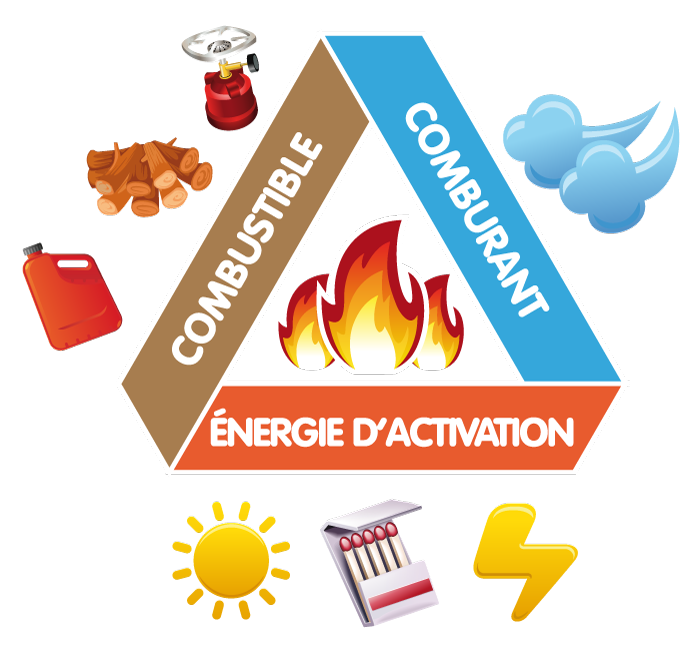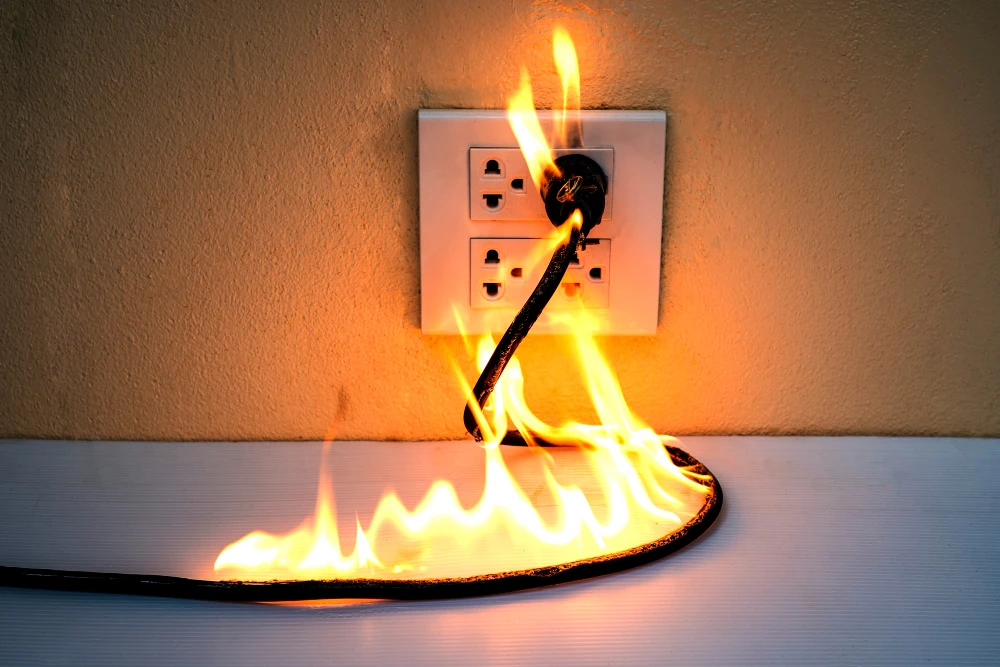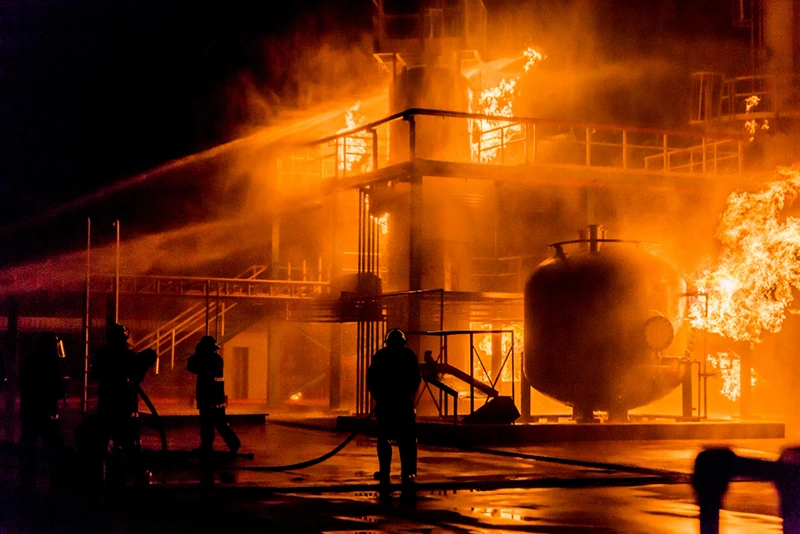The risk of fire in buildings is a major safety concern. A fire can occur as a result of several factors, including technical failures, human error, and environmental conditions. The consequences can be disastrous, especially if the fire occurs in critical infrastructure such as a military base, nuclear power plant, or high-risk industrial site.
The fire triangle is a fundamental model used to explain combustion. It is based on three essential elements:
If any of these three elements are removed, the fire cannot develop or is extinguished immediately. This theory is essential for understanding fire prevention and suppression strategies.


The consequences of a fire can be dramatic, both in human and material terms:
The risk of fire is the greatest and most probable in industrial plants, especially in nuclear power plants. A fire occurring in a nuclear facility is likely to lead to incidents or accidental situations: automatic shutdown of a reactor, destruction of equipment essential to the safety of the installation, etc. It can also lead to the dispersion of dangerous substances (radioactive or chemical) in the environment.

To limit risks and protect occupants, several standards and regulations govern the construction and equipment of buildings:

In France, building fire safety is mainly governed by:
At European and international level, we find in particular:
Doors play a critical role in preventing the spread of fires and in facilitating evacuation. There are several specific types of doors:
Flame-retardant doors, like our model Vega, only limit the spread of flames but do not guarantee thermal insulation against intense heat. They are often used to slow the spread of fire in corridors or transition areas.
Fireproof doors, like our doors in the range Phoenix, are designed to resist flames and smoke for a defined period of time (30, 60, 90 minutes, etc.). They are classified according to their Resistance, Watertightness, Insulation. For example, REI 60 means 60 minutes of fire and smoke resistance with thermal insulation. These doors are mandatory in sensitive spaces (hospitals, hotels, high-rise buildings).
These doors close automatically in case of fire thanks to an electromagnetic system coupled to a smoke detector. They thus ensure effective protection by preventing the spread of fire.

Performance is expressed in minutes. Thus, a door classified as EI 60 is a fire door that remains stable in a fire for at least one hour.
| E Integrity | EW Fire resistant and limited radiation | EI2 Integrity and insulation | EI1 Integrity and insulation |
|---|---|---|---|
| E 15 | EW 15 | EI2 15 | EI1 15 |
| E 30 | EW 30 | EI2 30 | EI1 30 |
| E 45 | EW 45 | EI2 45 | EI1 45 |
| E60 | EW 60 | EI2 60 | EI1 60 |
| E 90 | EW 90 | EI2 90 | EI1 90 |
| E 120 | EW 120 | EI2 120 | EI1 120 |
| E 180 | EW 180 | EI2 180 | EI1 180 |
| E 240 | EW 240 | EI2 240 | EI1 240 |
Fire prevention is based on a combination of best practices, compliance with standards and the use of appropriate equipment, such as fire doors. The installation of doors that comply with current standards is essential to limit the spread of flames and ensure the safety of sensitive sites. Baumert has a wide range of doors but also fire-resistant partitions and to the flames as well as multi-required technical doors to secure your critical infrastructures against natural, biological or terrorist risks.
